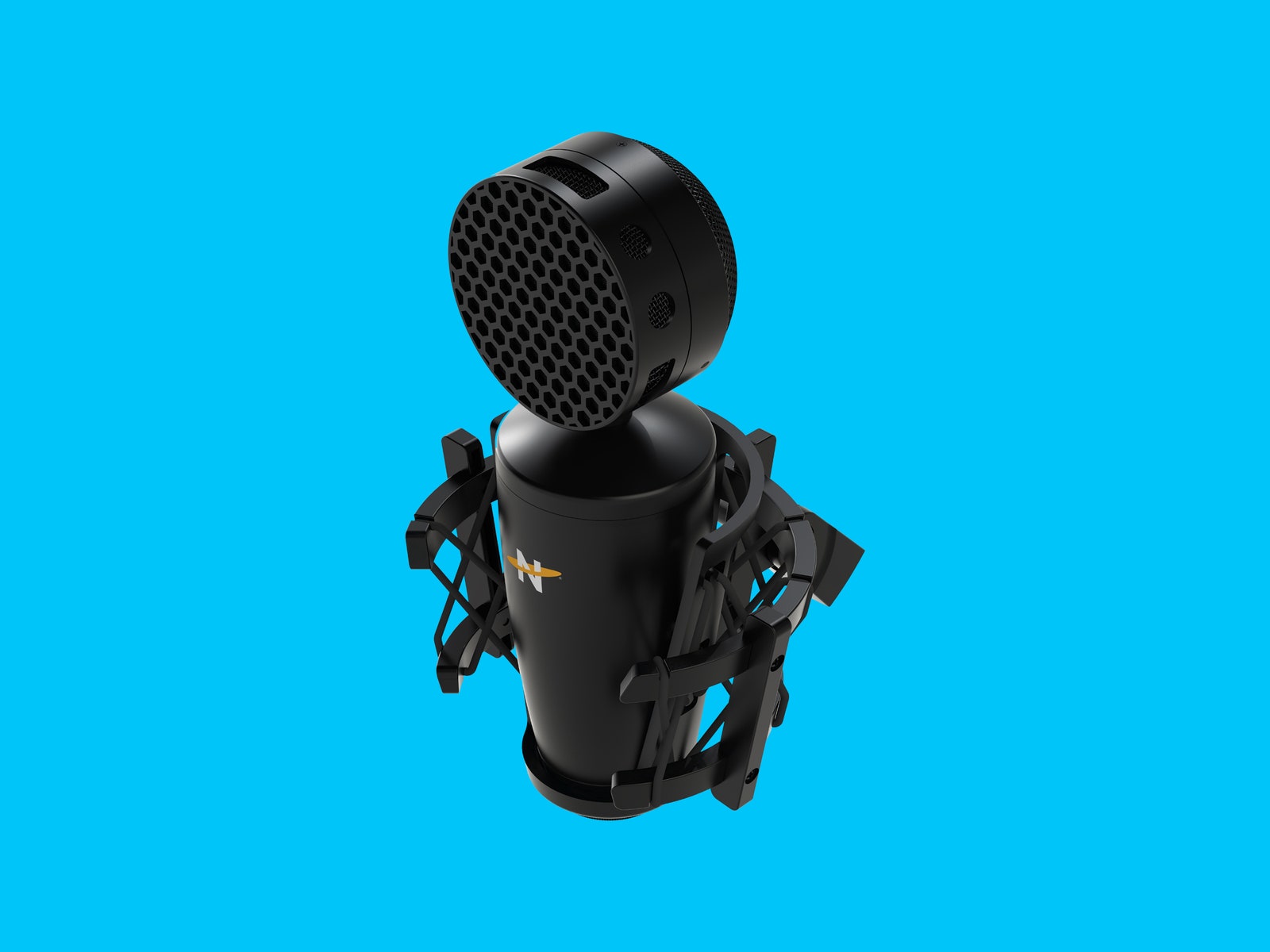[ad_1]
It’s hard to make a microphone that stands out these days. The basics of capturing audio haven’t changed much in decades, and the biggest distinguishing factor is cost. If you have a lot of money to spend, there’s already a perfect mic out there, but getting the best sound at a lower price can be harder. That’s where the King Bee II, from Neat Microphones, excels.
The King Bee II has a relatively large 34 mm condenser diaphragm, which makes it much better at picking up low-frequency sounds than a lot of condenser mics in its price range. Combined with great hardware and super low self-noise, you get an impressively clear, accurate, and rich sound for well under $ 200.
Bee-utiful
The last time I felt such a satisfying heft when pulling a microphone out of a box was the first time I unboxed a Blue Yeti. Many people might find the King Bee II unnecessarily heavy, and that would be hard to argue with — especially if your mic arm can’t handle the weight — but I like it.
The mic features a tapered cylindrical body that’s subtly reminiscent of a bee, with a round lollipop-like diaphragm (the membrane that detects audio) sticking out of the top. This second-generation model is an improvement over the company’s previous design, which was unsubtly bee-like, with stark black and yellow stripes. The King Bee II might be less visually striking, but I can think of very few scenarios in which the best possible design choice is thick and yellow. For me, the new body is a welcome change.
The tapered design means that it needs a custom shock mount, which it comes with. In my experience, the shock mount worked decently, with only the occasional bump getting through. I mainly use my mic for recording voiceover, which allows for multiple takes, but I’d still feel comfortable using it in a live broadcast situation. However, the need for a custom mount means most third-party mounts won’t work quite as well, which is something to consider.
It comes with a built-in pop filter, which is nice to not have to worry about buying separately. In another subtle nod to the bee branding, the filter features a honeycomb pattern. In my experience, the pop filter was effective at reducing some plosives (think big “P” sounds), but it wasn’t a miracle worker. If you have a more serious problem with pops, you might need a third-party filter, or to step back from the mic.
The Sound of Silence
One of the nicest traits of the King Bee II is low self-noise. Previously, I’d been using the AudioTechnica AT2020 — a common entry-level XLR mic that’s decent enough if you’re just getting started with voiceover or voice acting work. However, the AT2020 has a relatively high 20 dBA of self-noise.
The result is a hiss that’s present on every recording, no matter how quiet I make my recording space. Currents running through any electronic device make a small amount of noise, so to a certain extent this is unavoidable, but the King Bee II brings that noise down to a mere 6 dBA. This alone is significant enough that if I were buying today, I’d spend the extra $ 70 (or $ 50 when it’s on sale) for the King Bee II. Not only is it a lot easier to get a clear signal, but my voice sounds richer coming through this mic, simply because it’s not getting muddied by the noise the microphone itself is making.
A Solo Experience
Despite excelling at a lot of the basics that you’d expect from general-purpose mics, the King Bee II has some surprising limitations that might exclude some use cases. The biggest drawback is that it only features a single, cardioid polar pattern. This means it will only really be good at picking up audio directly in front of the microphone. If you’re hoping for a mic to record an interview between two subjects, you’ll need to look elsewhere or get two mics.
Additionally, while this should go without saying for a studio-focused mic like the King Bee II, you’ll need an audio interface that can provide phantom power in order to use it. Check out our guide on how to level up your at-home recording studio for more info on this kind of equipment, if you don’t have it already.
The King Bee II’s relatively low price for its quality puts it in a unique place where it feels like it should sit right next to USB mics like the Blue Yeti. However, it is a fairly studio-focused mic, and if you don’t already have the interface and related gear to record better audio, the price to entry is higher than the mic itself. Expect to spend at least a hundred dollars on a decent interface.
On the other hand, if you do have that gear already and are looking for an affordable mic for single-source recording, the King Bee II is tough to beat. It picks up impressive, accurate sound while being much less finicky (and loud) than other mics it competes with. At the very least, it has convinced me that I can do better than the voice recording setup I already had for similar money.
[ad_2]
Source link



